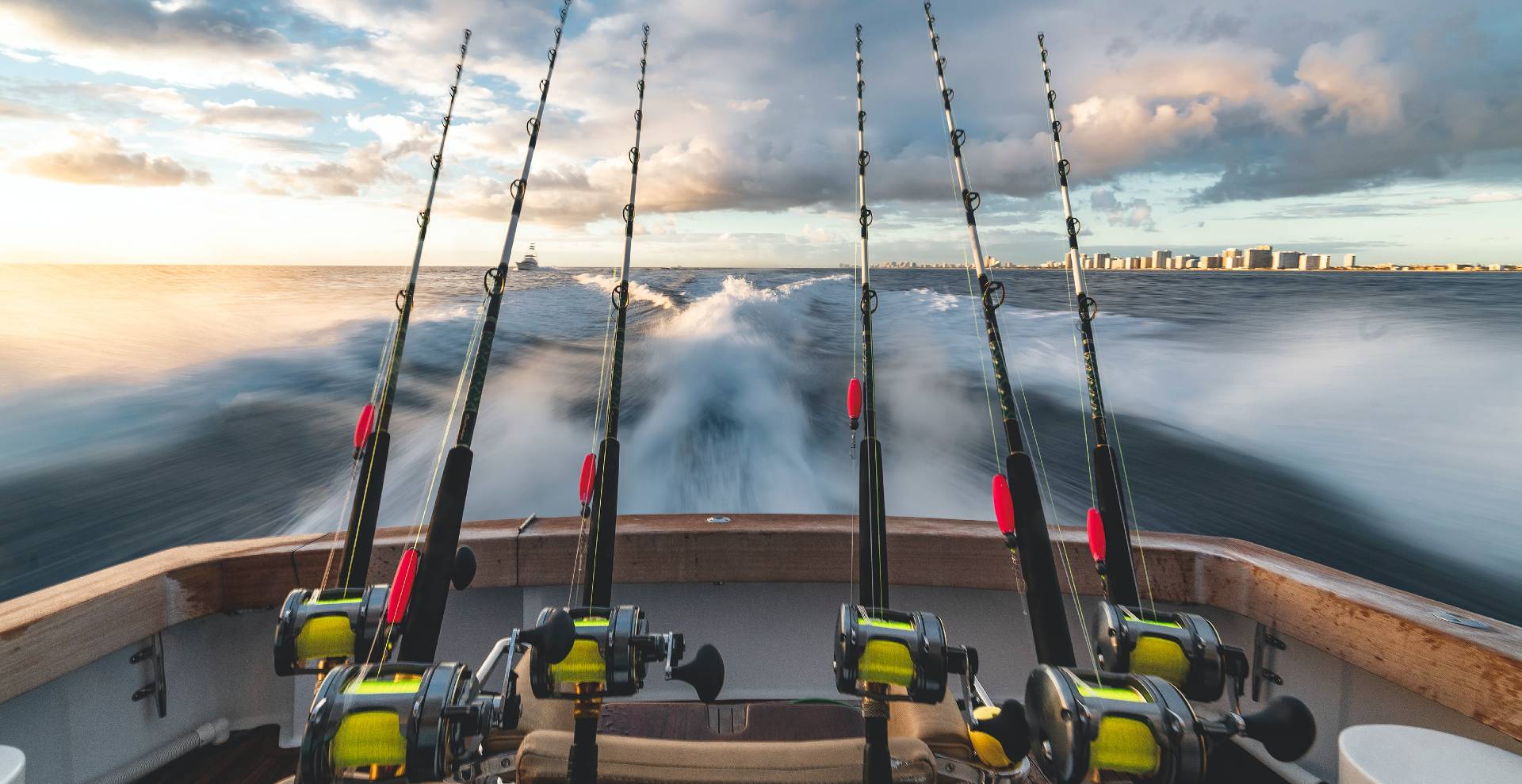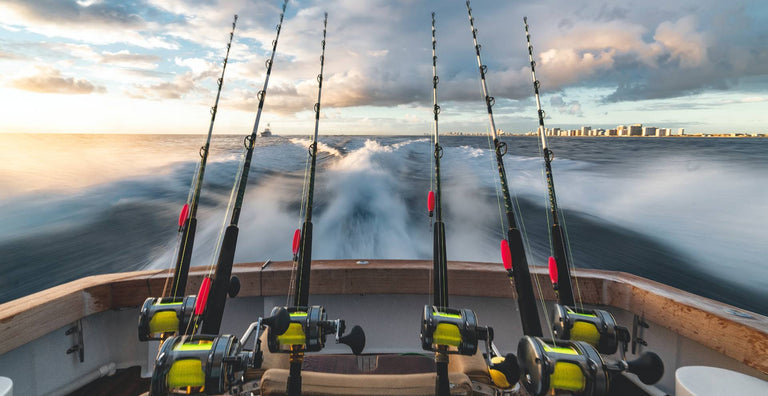Fishing line is a basic part of the setup for catching fish. Knowing what types of fishing line to use can be as important as using the right bait, fishing at the right time of day, or fishing in the right location. If your fishing line is weak you will lose your prize catch at the last moment. If you are fishing with a line that is too heavy it may be difficult to cast and totally inappropriate for the fish you are aiming for. Here are the types of fishing lines explained so that you can have the most success fishing no matter what fish you are aiming to catch.
How Do I Know What Fishing Line to Use?
There are several factors that will help determine what types of fishing lines to use. You may be offshore trolling for tuna or fishing bass in a creek behind your home. Knowing which line to use is a first step to catching that fish. Different fishing lines have different characteristics. And depending on what fish you are fishing for you need to be aware of the necessary characteristics for that fish. Before deciding on monofilament or fluorocarbon line you need to know what characteristics you need.
Fishing Line Characteristics
This is a brief rundown of the things that fishing lines offer and why certain characteristics may be good or bad. Keep these characteristics in mind when choosing types of fishing line.
Memory: When you pull out the line from the reel and it curls up instead of hanging straight, that is memory. Fishing line with too much memory may knot or kink when you are reeling it in. Lines with too much memory can be hard to cast longer distances as they “fight” being straightened out.
Stretch: Fishing line that is stretchy can be good or bad. You get less precision and less feedback as well as occasional difficulty setting the hook. But, stretchy lines provide better tension when fighting a fish so you are less likely to lose that prize fish due to an energetic head shake.
Shock Strength: If your line is weak or if it has no give, you are more likely to have it snap when you are playing a strong fish. Greater impact or shock strength helps protect you from losing the catch of a lifetime. Having some stretch to the line also helps keep that big one from getting away along with the hook, line, and sinker.
Abrasion Resistance: When you are fishing where there are lots of rocks your fishing line may rub across those rocks and even snap. Abrasion resistance is the ability of the line to withstand this scuffing. Modern lines are all pretty abrasion resistant but some are better than others.
Buoyancy: For top water fishing you want a buoyant fishing line so that it floats on the water. For fishing at depth you want a line that sinks so that it stays taut in the water. This gives you greater precision when fishing in deeper water.
Visibility: To avoid having the fish get spooked by your line, a low-visibility line is preferable when you are fishing in clear water. But, you may need to use colored lines when fishing in turbid water or a greater depth.
Types of Fishing Line
Fishing lines come in three types: monofilament, fluorocarbon, and braided. Each has its pros and cons.
Monofilament Fishing Line
This is a single thread of plastic, typically nylon which is a long, stretched out tube. Fishermen have been using monofilament since it was invented in the 1930s. Because it is a versatile fishing line, monofilament is the most popular across all types of fishing. If you want a cheap fishing line that holds knots, has low memory, and casts smoothly, monofilament is a good choice. It is quite buoyant and has good stretch. Two negative aspects of monofilament are that it does not last long and has lower shock strength than other lines of equal diameter.
Beginners should start with monofilament as it is cheap, works with all reels, and smooths out tension when fighting a fish. For situations like depth fishing where more precision is necessary use something else.
An alternative to monofilament is copolymer which is made with two materials instead of one giving the line greater shock strength and a bit less stretch. It is still low-memory but is more abrasion-resistant.
Fluorocarbon Fishing Line
Fluorocarbon fishing line comes from the chemical family as Teflon and Freon, is made just like monofilament is but is much more resistant to abrasion. It has been around since the 1970s. Fluorocarbon fishing line is nearly invisible under water, offers great precision, and exceptional shock strength. One of the drawbacks of fluorocarbon line is that you need to be careful when tying knots or they will come undone. It also tends to kink or tangle due to its high degree of memory. It is also more expensive than other lines.
Because fluorocarbon fishing line sinks rapidly you will use it for bottom tactics with drop shots and jigs. It works best with bait casters. Because of its near-invisibility in the water, many use a few feet as a leader when going after predator fish like pike that are extremely sight-based.
Braided Fishing Line
Unlike monofilament, copolymer and fluorocarbon which are simply a long, narrow tube of material, braided fishing lines are made by weaving together several strands of different polyethylene materials like Dyneema, Spectra, and Dacron. The result is a very thin line with incredibly high shock strength. Braided fishing line is made with between four and sixteen strands. The most abrasion-resistance comes with fewer strands. Because this fishing line has no memory it does not kink and flows freely. It gives you excellent precision but no stretch.
Braided fishing line has some nice features but these same features can be negative under some circumstances. Braided line stands out under water and can be cut by a fish bite. Knots are hard to tie. And, because it is so tough it can damage cheaper equipment like when it buries itself in the spool. It creates an impossible mess when it causes a backlash and is not recyclable like monofilament is. And, it is even more expensive than fluorocarbon lines.
When you need a really tough line for fishing at depth, working in heavy vegetation or weeds, and need lots of line, a braided line is ideal. You can use a braided line on any kind of reel although it usually comes on spinning reels.
What Is the Best Type of Fishing Line?
As you may have already guessed, there are no single best types of fishing lines. You need to consider what line characteristics you need for your particular situation and then choose your line. If you are fishing in clear water and especially if you are top fishing in clear water you should use monofilament. But, if you are going after “big game” like tuna you want to at least go up to fluorocarbon or even braided fishing line. And personal preference is important. If you hate fighting the line when tying a knot or hate paying for an expensive line only to have it snarl up and be wasted, stick with monofilament. If you are comfortable with the types of fishing lines you are using, then you are using the right ones.





